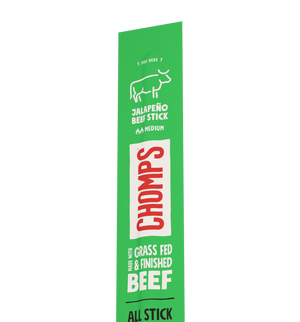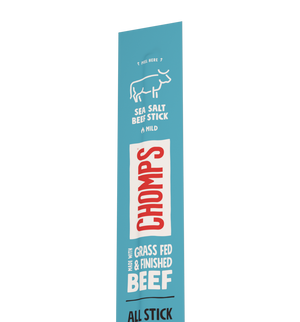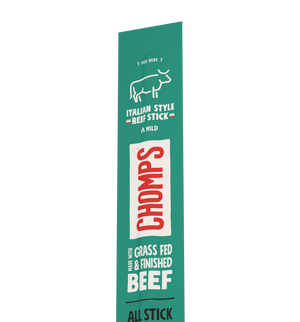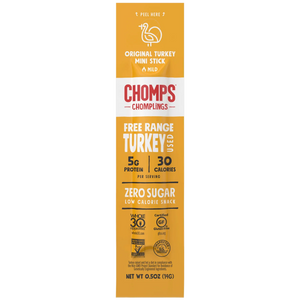It applies to most aspects of our life and especially weight loss.
Sometimes half the battle of losing weight is just knowing what to track and how to track it.
For many people, weight loss success depends upon having an effective system of tracking calories.
Calories in, calories out (CICO), right?
Weight loss really is that simple, but how can you figure out how many calories you burn per day? In other words, how do you figure out your baseline and determine how many calories you should be eating?
That's where understanding BMR (Basal Metabolic Rate) and TDEE (Total Daily Energy Expenditure) comes in. These formulas calculate how much energy you spend per day, and this allows you to set your calorie goals much more efficiently.
Once you understand your BMR and TDEE and the relationship between them, it becomes a lot easier to reach your weight loss goals.
Let's start with a bit more detail on what BMR and TDEE are, and then we'll explore how you can incorporate both in your day-to-day weight loss routine.
WHAT IS BMR?
Basal Metabolic Rate is how many calories you burn when your body is resting.
In other words, it's the calories your body needs to keep you alive. This is the bare minimum. Imagine you were in a coma — that's the base level we're talking about here.
Think of these as your "rainy day" or "couch-potato" calories. :)
No physical activity required!
People use BMR and other metrics to figure out how many calories they burn per day regardless of their physical activity. With BMR, you can factor in your workouts and exercise to figure out how many calories you should eat per day to meet your weight loss goals.
Basal means "forming or belonging to a bottom layer or base". It's the fundamentals.
But, that doesn't there isn't a lot happening beneath the surface. In fact, between 60-75% of your daily calories are burned during these processes.
Think about everything going on while you lie in bed: your heart has to pump blood, your lungs need to pull in and push out oxygen, and then that oxygen needs to be delivered to your brain and the rest of your body.
The energy required to perform fundamental processes like ventilation, blood circulation, and temperature regulation is dependent on your weight, height, age, and gender.
BMR is also used interchangeably with BEE (Basal Energy Expenditure) and is similar but not equal to RMR (resting metabolic rate) or REE (resting energy expenditure).
BMR is a slightly more restrictive definition than RMR, but many people confuse their definitions. True basal metabolic rate calculation requires patients to spend the night in a test facility the night before official testing. If you'd like to be that exact, you’ll need an appointment.
Scheduling an appointment isn't necessary, though!
For our purposes, we will be looking at the practical methods for calculating BMR, which essentially becomes RMR when calculated with a formula instead of testing.
So to clarify, getting an exact basal metabolic rate is quite difficult, but using a formula to get an estimation is more than enough to get your weight loss goals underway.
Calculating Your BMR
People debate how best to calculate BMR, but the formulas all consist of some essential elements:
- Gender
- Age
- Weight
- Height
- Activity
- Body Fat (optional)
The quickest way to calculate your basal metabolic rate is to use an online calculator, which you can find here.
Or if you'd rather do the math yourself, you can use these gender-specific equations known as the Harris-Benedict Formula.
This Harris-Benedict Formula summary is via EverydayHealth.com.
MALE BMR FORMULA
BMR Formula:
66 + (6.23 x weight in pounds) + (12.7 x height in inches) - (6.8 x age in years)
Example:
So if you're 170 pounds, 5'11", and 43, your BMR is 66 + (6.23 x 170) + (12.7 x 71) – (6.8 x 43) = 1,734.4 calories.
FEMALE BMR FORMULA
BMR Formula:
655 + (4.35 x weight in pounds) + (4.7 x height in inches) - (4.7 x age in years)
Example:
So if you're 130 pounds, 5'3", and 36, your BMR is 665 + (4.35 x 130) + (4.7 x 63) – (4.7 x 36) = 1,357.4 calories.
—
Got it? Alright! Once you’ve used a BMR calculator, TDEE is what you should look at next!
WHAT IS TDEE?
Total Daily Energy Expenditure (TDEE) is an estimation of how many calories you burn each day, including physical activity. It is calculated by multiplying your Basal Metabolic Rate by 1.2 - 1.9 based on your activity level.
TDEE is just BMR with estimations added in. It's the same formula except you add in a multiplier that's dependent on how much "activity" you have in a given day.
So for example, if you exercise 3-5 days per week, you'd multiply your BMR by 1.55.
You think of TDEE as adding in everything you do in a normal day to your basal metabolic rate calculation. And once you start using a TDEE calculator, weight loss will likely follow.
This includes all of our physical exercise as well as all of the little things we do throughout the day like showering, walking around the office, taking out the trash, cuddling with puppies, yelling at the TV… You know. Normal stuff.
Your TDEE is simply a measure of the number of calories needed to accomplish your basic, daily activities + your BMR.
If your calorie consumption is equal to your TDEE, you will maintain your current weight.
If your calorie consumption is less than your TDEE, you will lose weight and uncover more lean body mass.
It's really that simple.
Calculating Your TDEE
Based on the amount you exercise, use the following multiples:
- If you rarely exercise, multiply your BMR by 1.2
- If you exercise on 1 to 3 days per week, multiply your BMR by 1.375
- If you exercise on 3 to 5 days per week, multiply your BMR by 1.55
- If you exercise 6 to 7 days per week, multiply your BMR by 1.725
- If you exercise every day and have a physical job or if you often exercise twice a day, multiply your BMR by 1.9
Just like basal metabolic rate, you can quickly calculate your total daily energy expenditure using the TDEE formula online calculator.
So following the EverydayHealth examples, if the man exercises 3 days a week, his daily caloric requirement is 1,734.4 x 1.55, or 2,688.3 calories.
And if the woman in the example exercises 6 days a week, her daily caloric requirement is 1,357.4 x 1.725 or 2,342.5 calories.

USING BMR AND TDEE TO LOSE WEIGHT
Once you know your BMR and TDEE, all you need to do is make sure your caloric intake is less than that number!
So if your TDEE ends up being 2,200 calories per day, you need to eat fewer calories to achieve "weight loss".
How fast you lose it depends on how much your deficit is every day.
Generally speaking, there are about 3,500 calories in a pound.
In seeking weight loss, most dieticians recommend eating a deficit of anywhere between 500-1,000 calories a day.
The goal is not to lose weight the fastest — it's to be consistent.
When you need motivation over long periods of time (like a weight loss journey), the tortoise approach generally trumps the hare mindset.
So looking at a TDEE of 2,200, if you aimed for 1,700 calories per day, you’d be eating at a 500 calorie deficit. At this rate, you’d lose approximately 1 pound per week.
To test the accuracy of your TDEE, follow this deficit and see if your weight drops by about a pound per week. If not, you may be over or underestimating your BMR or TDEE multiplier.
Pretty cool, right?
Weight Loss in Practice
Then, all you need to do is track your calorie intake and the calories your body burns via an app like MyFitnessPal and adjust your TDEE multiplier as your exercise routine changes.
I’d also grab a cheap kitchen scale if you don’t have one already — being able to measure out your foods saves a lot of guessing and headaches when calorie counting. You can grab one for $10 or so on Amazon, and they also help a lot when meal prepping.
Meal prepping is going to be your best bet for staying on top of a calorie deficit! You can make one big meal, split it by calories and weight into separate containers, and just grab and go.
The more barriers you can break down when having to think about your calories, the better you will do.
Here are some great meal prep recipes for you to dig into.
CONCLUSION
There you have it!
Again, the relationship between BMR and weight loss and TDEE is key to accurately setting your weight loss goals.
Just knowing what your body needs and how your unique BMR and TDEE affect your weight loss strategy will help you immensely when trying to lose weight.
Without your metrics, you’re just guessing.
Start by calculating your BMR — reduce as many variables as you can, and then figure out your TDEE.
Once you have your numbers, use a calorie calculator, pick an energy deficit that you feel confident sticking to, and start your journey toward the life of your dreams.
Wishing you all the luck!
































